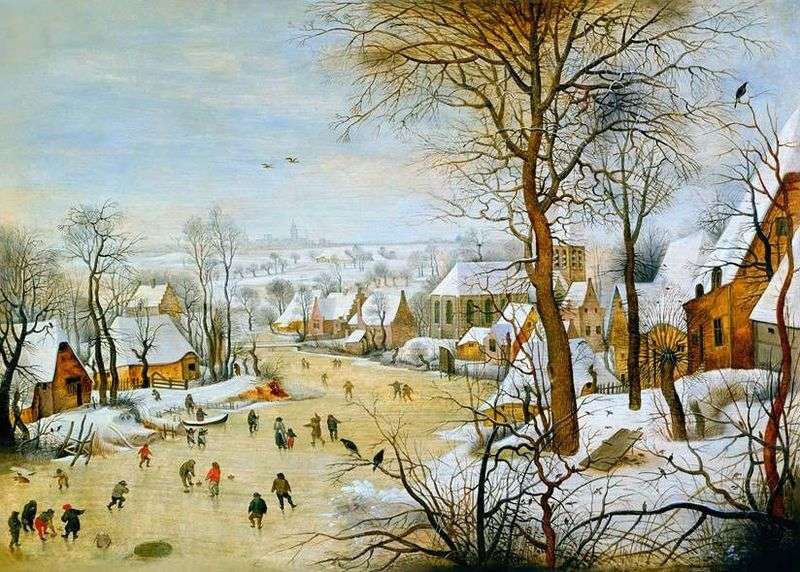
The complex and profound art of Peter Brueghel the Elder was a kind of spiritual commentary of the era. Pictures and drawings by Bruegel could successfully claim the role of the mirror mentioned in the famous book by Charles de Coster “The Legend of Eulenspiegel”, conveying the atmosphere that prevailed in the 16th century in the Netherlands: “… your mirror, yours, gentlemen, peasants and nobles, managed and ruling: a mirror of stupidity, absurdities and crimes of an entire era. ” Brueghel is multi-faceted: he was both a medieval moralist and a landscape painter in the modern sense of the word; was a truly northern artist, and at the same time his painting was marked by Italian influence.
In the picture “Trap for birds”, the artist depicted a snow-covered village on the river bank under the ice sheet and skating people. Such pastime is in full accord with the realities of the life of that era: in houses, with the exception of the dim flame of fire on the grate of the fireplace, there was almost no illumination, in the rooms it was always crowded, often all the members of the family were kept in a single room from small to large. For this reason, people in the 16th century, even the inhabitants of the northern countries, spent more time on the street and on the village square than on their own homes.
Some researchers find moralizing content in all the works of Brueghel, considering his paintings treatises on the themes of morality. In the picture “The Bird Trap”, they draw a parallel between the blindness of birds that do not see any danger in the trap door, and the foolish carelessness of people on the ice. And it is not by chance that these two birds on the branches in the foreground or the one in the upper right-hand corner do not differ in size from the people on the ice, that’s why the picture should be viewed only as an appeal to all caution. Bruegel’s art absorbed virtually all the most important tendencies of the Dutch art culture of the 16th century; thanks to its philosophical depth, it gained popularity in the twentieth century, having entered into a number of “timeless” signs of culture.

 (2 votes, average: 4.00 out of 5)
(2 votes, average: 4.00 out of 5)